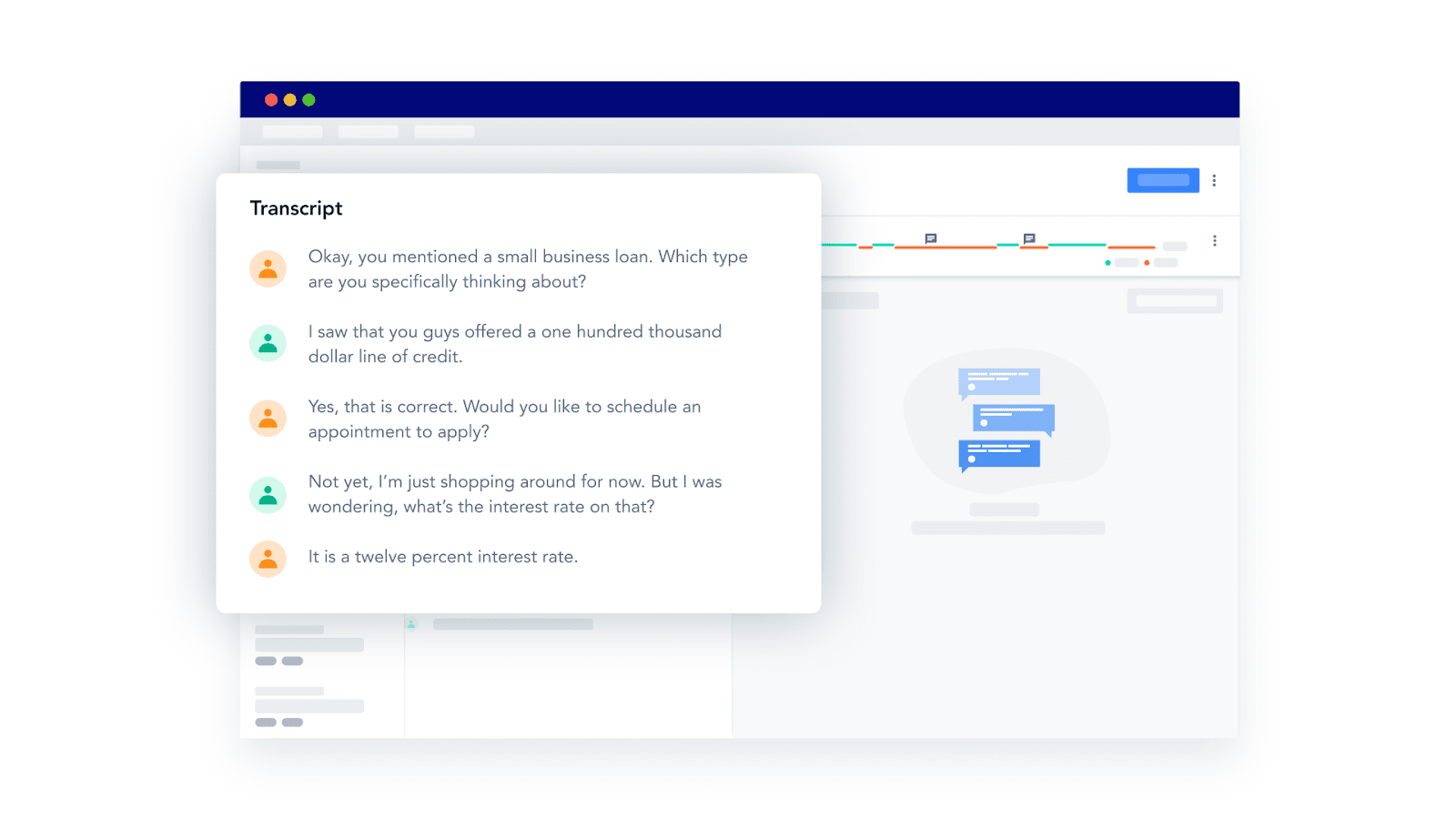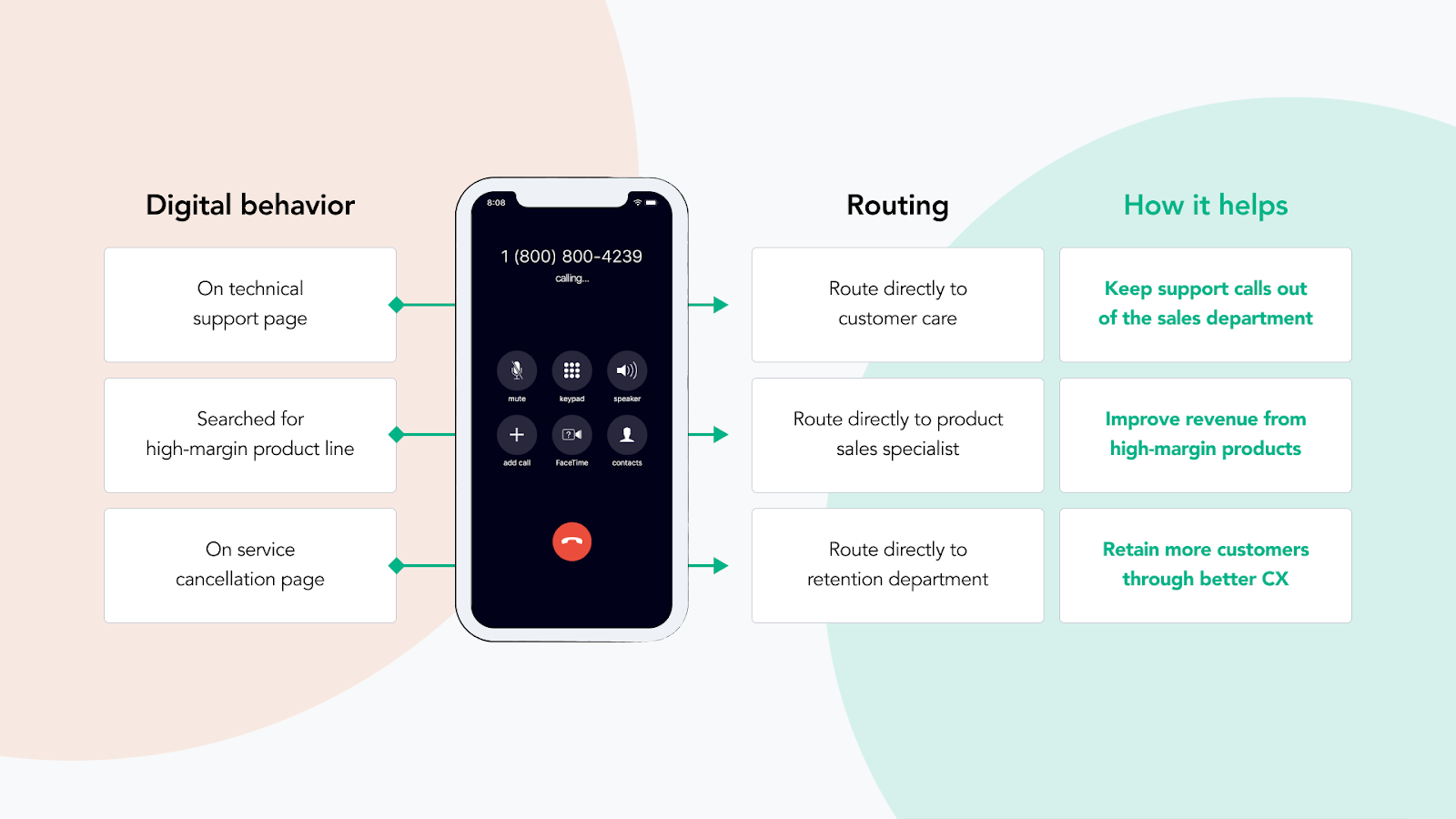- Request a demo
- United States
.png)
COVID-19 has caused radical shifts in the way consumers engage with financial services providers. To thrive in 2022, financial services marketers need to anticipate future trends and adapt their strategies accordingly.
Below, I list some of the most important trends financial services and insurance marketers will see in 2022, as well as how a call tracking solution can help you capitalize on them.
The financial services industry makes up a significant portion of total US digital ad spend, and it has been steadily climbing over the past four years. From 2017 to 2021, financial services and insurance providers are projected to increase ad spend by 117%.
To reach mobile users, financial services and insurance providers increased their mobile spending by 13.0% to $13.91 billion in 2020. This accounted for 70.9% of all digital ad spending in financial services. This move comes in response to more consumers engaging with financial services providers on mobile devices (more on this later).
As the digital advertising landscape continues to become more competitive — and costs per lead continue to rise — financial services marketers will face increasing pressure to prove their digital marketing ROI and optimize their spend to acquire more customers at a lower cost.
Monthly calls to financial services providers increased by 11% from May 2020 to August 2020. With in-person interactions limited by shelter-in-place orders, consumers relied on the call channel to speak with agents, make inquiries about their plans and accounts, and make purchases.
Though lockdown restrictions have since been eased, many consumers still restrict their in-person interactions due to safety concerns. Therefore, call volume is likely to be higher than it was during previous years, as consumers will use this channel to get information and make purchases.
In the summer of 2020, the US Federal Reserve decreased interest rates to a record low of 0-0.25%. This move was designed to buoy the economy and help repair the financial markets affected by COVID-19. As a result of this policy, financial service providers received a spike in the number of consumers taking out mortgages, car loans, and other loans.
In recent projections, all 17 Fed officials said they expected to hold the same near-zero interest rates through the rest of the year. 13 of them projected they would hold these interest rates through 2023. Therefore, financial services marketers should expect this increased demand for loans and borrowing to last through 2022.
COVID-19 has caused many insurance buyers — especially those in high-risk groups — to reevaluate their life insurance plans. Policygenius CEO Jennifer Fitzgerald says their company has seen the highest levels of consumer search traffic ever for life insurance. Search volume for life insurance in 2020 was 25 to 50% higher than in previous years.
In 2022, experts expect this trend to continue. In response, many insurance providers are looking at new bundling packages and promotions for their life insurance offerings.
For many years, financial services consumers have increased their use of mobile banking and other virtual services. There has been an even more dramatic increase of mobile usage in 2020, as consumers limit their in-person interactions with financial services providers.
Experts estimate that by 2021, there will be roughly 7 billion mobile banking users worldwide. This projection has been sped up by the new realities of COVID-19. But the online experience often isn’t enough — 37% of customers also want instant access to a live agent via a phone call or video chat. These interactions are often a critical phase of the purchase cycle, helping to clear up their hesitations and answer their lingering pre-purchase questions.
In addition, many insurance customers are now starting their journey on mobile. Over 50% of insurance searches are performed on mobile devices.
Providing a seamless mobile experience — online and over the phone — will be critical for 2022.
Going hand-in-hand with the last trend, financial services consumers will demand seamless omnichannel experiences across their entire journey. To earn their business, you’ll need to ensure they feel valued and known every step of the way.
According to a recent survey, 50% of banking consumers want a seamless mix of physical and digital services during their buying journey. However, despite the importance of omnichannel marketing, 94% of banking firms aren’t delivering personalized experiences.
This trend is also critical in the insurance space, where 88% of insurance customers say they want more personalization from providers.
To get an edge over the competition in 2022, financial services and insurance companies need to embrace personalization across channels. This means providing a seamless experience as they transition from online research to phone calls to brick-and-mortar interactions.
The trends above paint a bigger picture of how financial services consumer behavior is changing. In 2022, in-person interactions with banks, insurance agents, and financial advisors will be limited due to COVID-19, placing increased importance on the call channel.
With more consumers researching online first and calling agents and locations for information or to make purchases, financial services marketers need to have a strategy in place to ensure that they’re providing a seamless experience over the phone. As I mentioned above, expectations for the consumer journey are at an all-time high — and this includes the call channel. Failing to deliver frictionless call experiences will cost you revenue.
PCI-compliant call tracking and analytics solutions like Invoca allow you to understand the webpages, marketing campaigns, and keywords driving not only the most calls — but the highest quality calls to your agents and locations. This allows you to optimize your marketing spend for the programs that are truly driving the most revenue.
For instance, a certain wealth management search campaign may be driving a high volume of calls to your locations. However, once you use a call tracking solution, you may discover many of these calls are not sales-related — they’re customer experience issues. You could then decrease spend on this campaign, and instead allocate it to one that’s driving more sales-related calls. This increases the overall revenue potential and quality of the calls coming into your phone lines.
Call tracking and analytics solutions like Invoca help you create seamless call experiences that increase customer acquisition. They provide detailed reports on answer inbound call rates and call handling performance at each location or call center that you can use to detect customer experience issues.
For example, you can see if your calls are going unanswered at specific locations and what days and times those unanswered calls occur. You can then diagnose if your marketing is sending calls to locations when they are closed or understaffed, and make adjustments.
Call tracking and analytics platforms like Invoca give you a searchable database of call recordings and transcriptions that you can tap into. This allows you to see what’s occurring on the inbound calls your marketing is driving to call centers and locations and use these insights to make optimizations that drive more conversions.
If unconverted calls are an issue, you can analyze your recordings and transcriptions to see if your locations, call centers, and remote agents are saying the right things when consumers call. You can then pinpoint any issues. For instance, are they failing to mention relevant insurance bundling promotions? Are they accurately describing the safety precautions you’re enacting for any in-person interactions? You can then take steps to remedy them. In addition, you can share these recordings and transcriptions with your locations and/or call centers to use as coaching tools to improve performance.

You can also use transcriptions to discover common caller questions and concerns — such as FAQs on interest rates — and add them to your website and product pages to get more SEO visits and improve conversion rates.
If you’re experiencing unmanageably high call volumes, you can also consider using your call tracking solution to set up an IVR (interactive voice response). You can configure an IVR to ask callers why they’re calling, route them to the best destination based on their responses, provide answers to common questions (such as FAQs about your COVID-19 precautions and low interest rates), and more.
You can also set up dynamic routing rules, in tandem with or independent of your IVRs. Below are several call routing configurations that can improve conversion rates for financial services providers:

To learn more about how call tracking data can enhance your financial services marketing strategy, download our Call Tracking Study Guide for Marketers.

